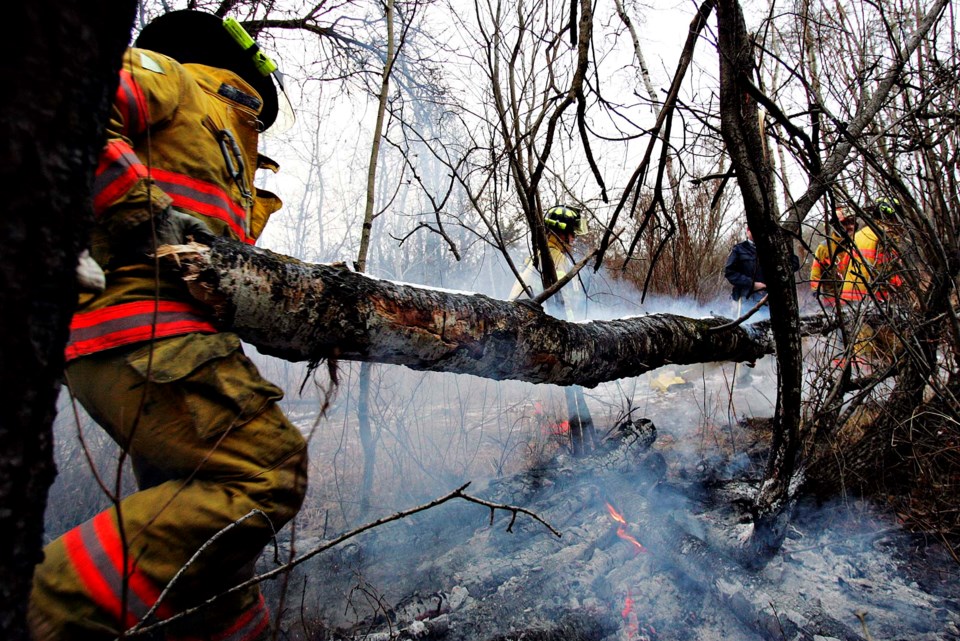Forest management and rapid response times make mega-fires like the one that swept through Jasper this summer much less likely in St. Albert, say city officials.
Tens of thousands of people were forced to evacuate from Jasper this summer after a wildfire swept through town, destroying or damaging about a third of the town’s buildings.
While St. Albert does have a lot of trees, City of St. Albert parks operations supervisor Erin Pickard and fire prevention officer Ryan Harley said this city has many advantages over Jasper when it comes to fire prevention.
First off, Pickard and Harley said St. Albert is in an urban environment surrounded mostly by fields instead of dense forest. That means less fuel to burn and more fire barriers such as roads.
It also takes time for a forest fire to grow large, Harley said. In the forests around places like Jasper, fires can grow to great size before anyone notices them, and crews often can’t easily reach them to put them out. In a city like St. Albert, there are so many people around that fires are swiftly reported, with local crews able to get to those blazes within minutes. St. Albert also has other regional fire departments close by it can call for backup.
The spruce and pine trees around Jasper had rough bark and dry, dead, flammable branches around their base, which allowed fire to quickly spread to the tops of trees and create a more intense blaze, Pickard noted. St. Albert’s forests (with one big exception) are mostly deciduous trees such as poplar, which have smooth, less combustible bark and keep their branches up high and alive, making them less combustible.
Poplar fluff is a very good ignition source, but the fires it starts tend not to ignite grass or trees, Harley said.
“It’s just a really fast surface fire,” he said of fluff-caused fire, and typically burns itself out before firefighters arrive.
The spruce trees of the Grey Nuns White Spruce Park are more flammable than poplar, but also in a fairly moist area surrounded by less-flammable buffer zones, such as the Sturgeon River, a stormwater pond, and an open field, Harley said.
Fire prevention
Harley said city fire crews step up their wildland fire training and start making plans of attack for forest fires as early as April to prepare for potential blazes. Crews monitor weather conditions year-round and issue fire restrictions when necessary.
Parks crews will sometimes remove dead trees from tree stands to reduce fuel loads, Pickard said, adding they used horses to do so from the White Spruce Park in 2018. The trees they do leave for animal habitat are placed flat to the ground so they become waterlogged and decay faster. Crews are also working to plant more poplar trees between the White Spruce Park and Ray Gibbon Drive to act as a fire buffer.
Harley and Pickard said city residents can help protect St. Albert’s forests from fire. Keep yard waste and firewood away from fences and out of forested areas, sweep up or wet down poplar fluff, and never extinguish cigarette butts in planters.
Visit stalbert.ca/city/eps/fire/safety/natural-areas for more on fire safety as it relates to St. Albert’s forests.




